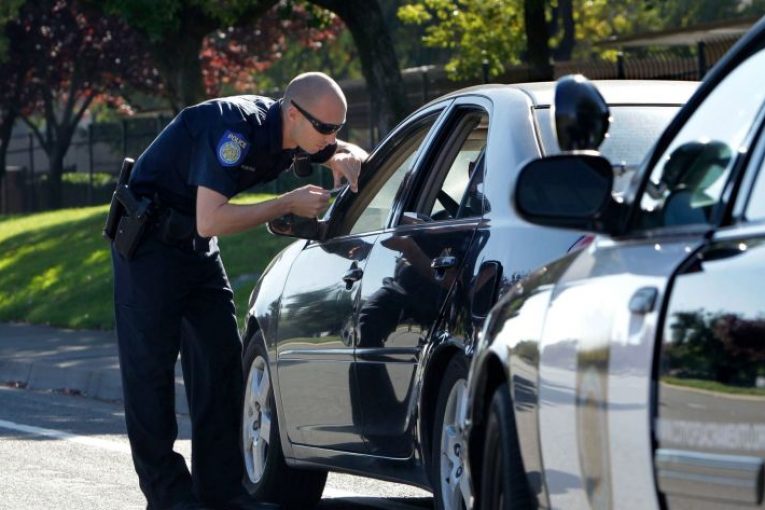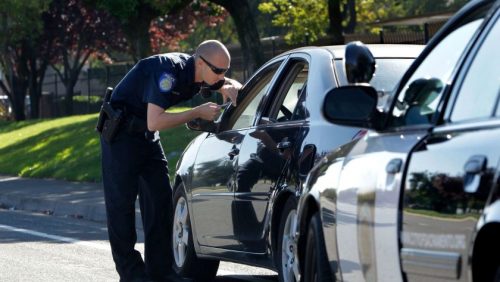

By The Vanguard Staff
SACRAMENTO, CA — Black people in San Francisco in 2020 were nearly six times more likely to be stopped by law enforcement than whites, according to a report by the CA Attorney General, which indicates a disparity actually worse than in 2019 for both SF and most of the rest of California cities.
The statistics indicate, note critics, that racial profiling in California is getting worse not better, comparing 2019 to 2020.
Los Angeles had about the same disparity as SF, while in the city of Sacramento, Black people were stopped about 3.7 times more than whites, compared to 3.1 times in 2019. The city of Davis stopped Black people more than three times the rate of whites.
According to a study of the statistics by the SF Chronicle, “San Francisco had the greatest disparity in stops of Black and white people in the Bay Area: Police stopped 2,313 Black people for every 10,000 Black residents in the city in 2020, compared with 389 stops for every 10,000 white San Franciscans.”
In SF, police stopped just 131 Asians for every 10,000 resident, and 552 Hispanics, said the Chronicle.
Although the state notes it’s encouraged local law enforcement to end a pattern of racial profiling, the Chronicle analysis indicates it’s made little difference—the data “reveals that Black people are far more likely to be stopped by police than white people, and that the disparity widened in 11 of the state’s 15 biggest law enforcement agencies from 2019 to 2020.”
Despite being stopped more, Black people were found to be “less likely to be found carrying contraband…but more likely to have force used against them,” said the Chronicle based on the AG raw data.
“(M)any police leaders have not acknowledged that their officers are prone to racial profiling, even as they send them to training meant to minimize bias. Some blame the racial differences on strategies that deploy more officers to lower-income neighborhoods, often communities of color, that experience more crime,” said the Chronicle.
John Jones, III, a police reform advocate from Oakland, said attempts by police to police themselves have not worked, and, “If we’re just gathering data, there’s nothing transformative about that,” Jones said. “We don’t need to quantify the experience; we need to eliminate it.”
Jones said six Oakland police officers pulled him over in 2015, with officers with guns drawn telling him his new Toyota Corolla, with a paper license in the window, caused suspicion. “If I just twitched or reached for my wallet, I could have lost my life,” he told the Chronicle.

While the law “requires local police departments to report the demographic data — including race and ethnicity, gender and approximate age — of every driver, bicyclist or pedestrian they stop, based on the officer’s perception of those characteristics,” said the Chronicle, it’s all based on reports by officers and the data cannot be independently verified.
The Chronicles suggested it’s “not uncommon for police to report incomplete or false data,” citing that the “Los Angeles Police Commission’s inspector general reviewed 0.2 percent of the 712,408 stops that LAPD made in 2019 and found officers did not account for all of their actions, most often searches, in 18 percent of stops.”
“It’s devastating and it’s hurtful that no one in the city seems to have an urgency to really bring these disparities down,” Phelicia Jones, founder of the San Francisco organization Wealth and Disparities in the Black Community, told the Chronicle.
Oakland, said the Chronicle in its analysis, reported the “second-largest disparity in stops of Black and white residents in the Bay Area: Police stopped Black people 1,216 times for every 10,000 Black residents in 2020, compared with 230 white people per 10,000 white residents.” OPD only stopped 421 Hispanic people and 137 Asian people per every 10,000 in population.
“To explain the wide racial disparities seen across different agencies, many officers point to factors including high populations of Black and Hispanic people living in the neighborhoods they most commonly patrol, and disproportionate arrest rates among lower-income people of color in their jurisdictions,” according to the Chronicle.
Reportedly, police agencies are “stopping far fewer drivers and pedestrians than they were a decade ago. But though the total number of stops is down, the disparity for stops of Black people has only widened over time,” said the Chron, adding, “Oakland’s disparity has decreased somewhat in recent years, though in San Francisco, the gap appears to be growing larger.”
Chronicle reporters said data shows “Black people are also far more likely to be subject to force once they are stopped, the data shows. Police used force — lethal or nonlethal — against Black people at 2.6 times the rate of white individuals.”
This was verified by Chris Martin, an attorney and Black Lives Matter Los Angeles volunteer, who said Black men who experience racial profiling often deal with trauma “because they know they have been wronged but rarely have recourse.”





